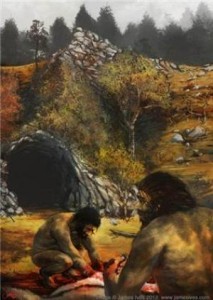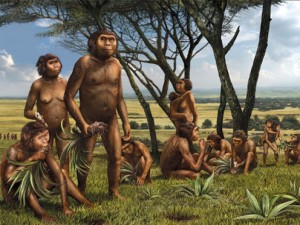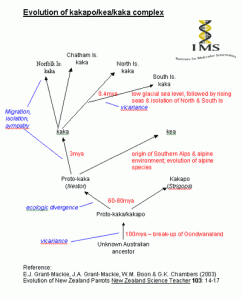
Neanderthals at the cave site of Trou Al'Wesse in Belgium, clinging on as climate deteriorated. (Credit: Digital painting by James Ives)
Although an African origin of the modern human species is generally accepted, the evolutionary processes involved in the speciation, geographical spread, and eventual extinction of archaic humans outside of Africa are much debated. An additional complexity has been the recent evidence of limited interbreeding between modern humans and the Neandertals and Denisovans (a newly discovered group from Siberia). Modern human migrations and interactions began during the buildup to the Last Glacial Maximum, starting about 100,000 years ago. By examining the history of other organisms through glacial cycles, valuable models for evolutionary biogeography can be formulated. According to one such model, the adoption of a new refugium by a subgroup of a species may lead to important evolutionary changes.
“Ultimately, this model explains why Homo sapiens as a species are here and the archaic humans are not.” Dr J.R. Stewart
The research also leads to interesting conclusions as to how and why Neanderthals, and indeed the Denisovans, evolved in the first place.
Check out the full article here



 Struggling to get your head around role of polyploidy in speciation, adaptive radiation and such like?
Struggling to get your head around role of polyploidy in speciation, adaptive radiation and such like?


Recent Comments